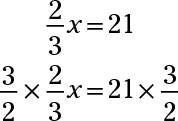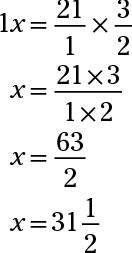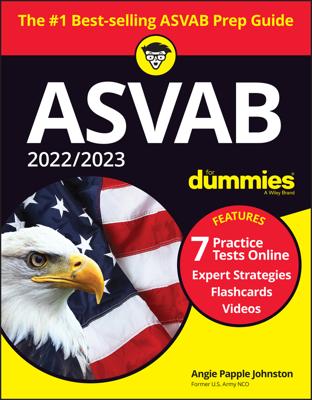You will encounter algebra problems on the ASVAB. Algebra problems are equations, which means that the quantities on both sides of the equal sign are equal — they’re the same: 2 = 2, 1 + 1 = 2, and 3 – 1 = 2. In all these cases, the quantities are the same on both sides of the equal sign. So, if x = 2, then x is 2 because the equal sign says so.
Variables
Most algebraic equations involve using one or more variables. A variable is a symbol that represents a number. Usually, algebra problems use letters such as n, t, or x for variables. In most algebra problems, your goal is to find the value of the variable. In the equation, x + 4 = 60, you’d try to find the value of x by using several different useful rules of algebra.
Following the rules of algebra
Algebra has several rules or properties that — when combined — allow you to simplify equations. Some (but not all) equations can be simplified to a complete solution:
You may combine like terms. This rule means adding or subtracting terms with variables of the same kind. The expression 4x + 4x simplifies to 8x. 2y + y is equal to 3y. The expression 13 – 7 + 3 simplifies to 9.
You may use the distributive property to remove parentheses around unlike terms.
You may add or subtract any value as long as you do it to both sides of the equation.
You may multiply or divide by any number (except 0) as long as you do it to both sides of the equation.
Combining like terms
One of the most common ways to simplify an expression is to combine like terms. Numeric terms may be combined, and any terms with the same variable part may be combined.
Take, for instance, the expression 5x + 3 + 3x – 6y + 4 + 7y.
In algebra, when two or more variables are multiplied, it’s traditional to place the variables next to each other and omit the multiplication sign: a × b = ab. The same rule applies to variables multiplied by numbers: 4 × y = 4y.
5x and 3x are like terms. So are –6y and 7y. 3 and 4 are also like terms because they’re numbers without variables. So combining the like terms, you have
5x + 3x = 8x
–6y + 7y = 1y (or just y)
3 + 4 = 7
By combining the like terms, the expression 5x + 3 + 3x – 6y + 4 + 7y simplifies to 8x + y + 7.
Using the distributive property
You’re thinking that combining like terms is pretty cool, but what if you have unlike terms contained within parentheses? Doesn’t the order of operations require you to deal with terms in parentheses first? Indeed, it does, and that’s where the distributive property comes in.
a(b + c) = ab + ac. For example, 6(4 + 3) is mathematically the same as (6 × 4) + (6 × 3).
Applying the same principle to algebra, the distributive property can be very useful in getting rid of those pesky parentheses:
4(x + y) = 4x + 4y
Using addition and subtraction
You can use addition and subtraction to get all the terms with variables on one side of an equation and all the numeric terms on the other. That’s an important step in finding the value for the variable.
The equation 3x = 21 has only the variable on one side and only a number on the other. The equation 3x + 4 = 25 doesn’t.
You can add and subtract any number as long as you do it to both sides of the equation. In this case, you want to get rid of the number 4 on the left side of the equation. How do you make the 4 disappear? Simply subtract 4 from it:
3x + 4 – 4 = 25 – 4
The equation simplifies to 3x = 21.
Using multiplication and division
The rules of algebra also allow you to multiply and divide both sides of an equation by any number except zero. Say you have an equation that reads 3x = 21, or 3 times x equals 21. You want to find the value of x, not three times x.
What happens if you divide a number by itself? The result is 1. Therefore, to change 3x to 1x (or x), divide both sides of the equation by 3:

But what if the equation were
What would you do then?
If you multiply any fraction by its reciprocal, the result is 1. Remember, a reciprocal is a fraction flipped upside down.

Remember to multiply both sides of the equation by 3/2.


